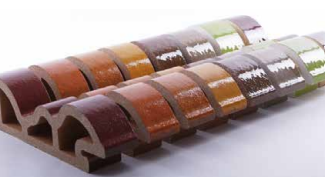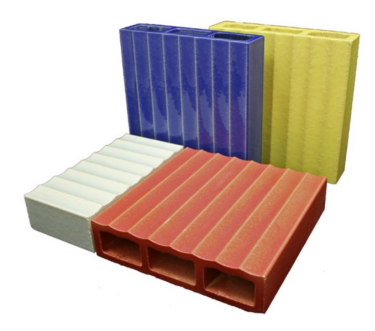Introduction
Welcome to our blog, where we delve into the fascinating world of clay manufacture and its application in modern architecture. We will explore the entire process from quarry to finished product, shedding light on the intricate techniques and considerations involved. Our insights cover topics such as performance, aesthetics, and environmental impact, offering a comprehensive understanding of terracotta’s timeless allure. Whether you’re a seasoned professional or a curious enthusiast, join us on this journey of creativity, innovation, and dedication to uncover the true potential of this ancient yet enduring material.
The use of terracotta continues to grow in Colorminium’s portfolio. Of late the product has been very popular amongst our clients and architects as demonstrated on Marylebone Square, 50 Eastbourne Terrace and The Royal Holloway University Library. Terracotta is often used in heritage environments where planning conditions dictate material applications. However, this can be done to ensure that the architectural design is fitting but ultimately it is very architecturally pleasing. Use of this artisan product can be challenging due to its fragility, but with experience it can be used highly effectively.
Manufacture
Upon arrival at the factory, quarried clay undergoes a meticulous process. It is extruded through standardized or custom-made steel dies and then precisely cut to size. At this stage it is still possible to recycle the clay element and process it again through the die.
Following shaping, the panels undergo drying and can either retain a natural finish or receive a glazed/engobe coating before firing.
The firing process is usually carried out in one of two types of kiln. Above a certain size profiles require firing using a box kiln, where ceramics are loaded, heated to the required temperature and duration, and then left to cool before unloading. While box kilns are effective, roller kilns offer greater efficiency, particularly for standard flat tile products. These kilns operate continuously, optimizing output and energy efficiency but their fixed height above the rollers limits the profiles that can be fired with this method.
Where possible terracotta profiles should be optimised to allow the use of roller kilns due to the speed and cost benefits.
At the end of the firing process profiles are trimmed to size. Where a double glazed finish has been selected a second coat of glaze will be applied, ensuring that the cut edges of the profile are covered. The profiles are then fired a second time before stacking for transport. The energy used in this second firing results in more carbon being used in the production process for double glazed terracotta and adds additional cost to the project. There are also fewer suppliers available that offer this process.

Performance
In it’s essence terracotta is simply a mix of clay and water with no strengthening additives which has been used for thousands of years. Technological advancements support this proven material, making it robust under controlled conditions and whilst it is an inherently brittle material, with carefully designed supporting structure it can prove very robust under soft body impact.
Aesthetics
The base material is known for its red colour though variations exist from light beige to darker greys. However, the addition of pigments and glazes make virtually any colour possible whether glazed or unglazed.
Unglazed: Colour variation in unglazed terracotta is achieved by mixing different types of clay which give natural fired colours ranging from white, beige/yellows and of course a wide range of traditional reddish hues. A wider variation in colours can be achieved by the addition of pigments or oxides.
Glazed: With glazed tiles it is common to use a typically off-white base mixture colour for the terracotta clay with the application of glaze that is applied to the tiles before they go into the firing process. These can be a transparent glaze to show the base colour underneath or an opaque glaze. Glazes can be gloss or matt finishes and by combining multiple glazes on different layers of the product, other special effects, including iridescence, are possible. Projects such as Marylebone Square – (insert link) feature an extensive use of glazed terracotta, using a combination of extrusion, RAM press, and hand press forming methods. This project consists of four custom glazed colours in a warm palette of tan and ivory.



Variety in Shapes: One of terracotta’s greatest strengths is its adaptability. It can be moulded into a myriad of shapes, from traditional tiles to intricate architectural elements. In it’s most efficient form profiles are extruded, with some of the key considerations being:
- Extrusion Width – large format terracotta is usually extruded with maximum die widths constraining the width of the panel
- Shrinkage/movement/tolerances of the panel. Large sizes are more susceptible to this in the manufacturing process. Manufacturers will determine tile thickness accordingly, and will assess the lengths possible for each width/thickness of extrusion.
- Oven constraints. Roller kilns typically work with a maximum height of 150mm passing through the kiln on rollers. This limits the size of any returns or depth of any relief to be incorporated in the extrusion. Deeper pieces can be stood on end to fire in a box kiln, however this limits the height and is a lot slower and expensive.
Texture: Textured terracotta finishes are being increasingly exploited as a design feature in contemporary architecture. Standard textured finishes offered for instance by NBK terracotta include fine peeled, peeled, fine combed, medium combed, sandblasted and honed.
Life cycle: Terracotta has a long-life cycle, known to last 100 years with little maintenance, with stable colour retention. Despite its delicate appearance, terracotta boasts surprising durability. Its inherent robustness, especially against soft body impact, makes it an ideal choice for high-traffic areas. When properly supported by a well-designed structure, terracotta surfaces can withstand the rigors of everyday use.
Support Systems
Rainscreen Backing: One of the most common ways to utilize terracotta is through a rainscreen system. Terracotta tiles are hung onto a lightweight aluminium sub-support system, creating a continuous insulation outboard with overlapping joints. The system is generally open jointed and carefully designed to drain water away from the cavity that lies beneath the support structure, protecting the building from weather conditions.

Unitized Backing: Bespoke terracotta elements can also be mounted onto a unitized façade, installed fully off-site in a factory-controlled environment. The terracotta elements are engineered in conjunction with the façade specialist to integrate structural and ventilation properties.
Precast Concrete Backing: In this case, terracotta panels are factory bonded onto large precast concrete units, offering the strength of a precast concrete construction as well as aesthetic design, profile and finish options offered by terracotta facing
Reducing The Environmental Impact
Manufacturing and transporting ceramics demand substantial energy, with firing contributing up to 55% of total energy requirements. Designing profiles that allow the use of roller kilns rather than box kilns increases efficiency and reduces the energy required for production. Similarly glazing and twice glazing the tiles for aesthetic effect requires multiple processing through the kiln and significantly increases the embodied carbon of the material.
Substructure design has a great impact on the amount of carbon that is embodied in the façade as often a number of aluminium support profiles are required. It is important to create the most efficient layout of the tiles in terms of the lengths and spans. It is important to work through this with a specialist to ensure that the most optimum solution can be found.
It is also important to develop a packing and transport strategy for the often large, relatively heavy, and fragile elements. This is to minimise breakages (and therefore wastage/remakes) and also to optimise the efficiency of the transport to storage/site.
Conclusion
In conclusion, terracotta stands as a testament to craftsmanship, innovation, and sustainability in architecture. Whether it’s preserving heritage sites or shaping the skylines of tomorrow, terracotta continues to inspire with its timeless beauty and enduring legacy.


